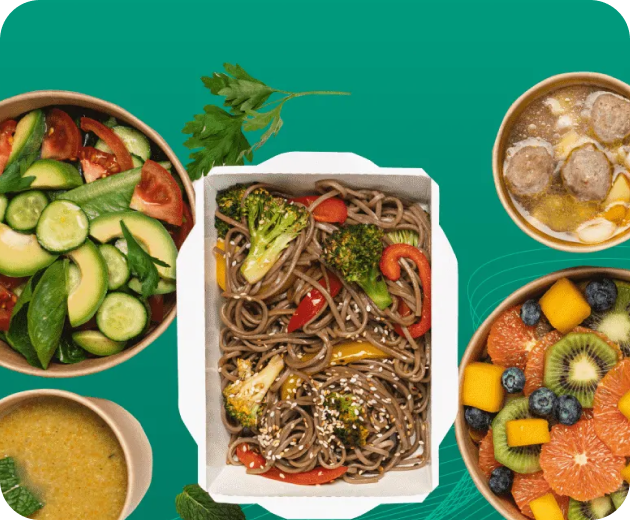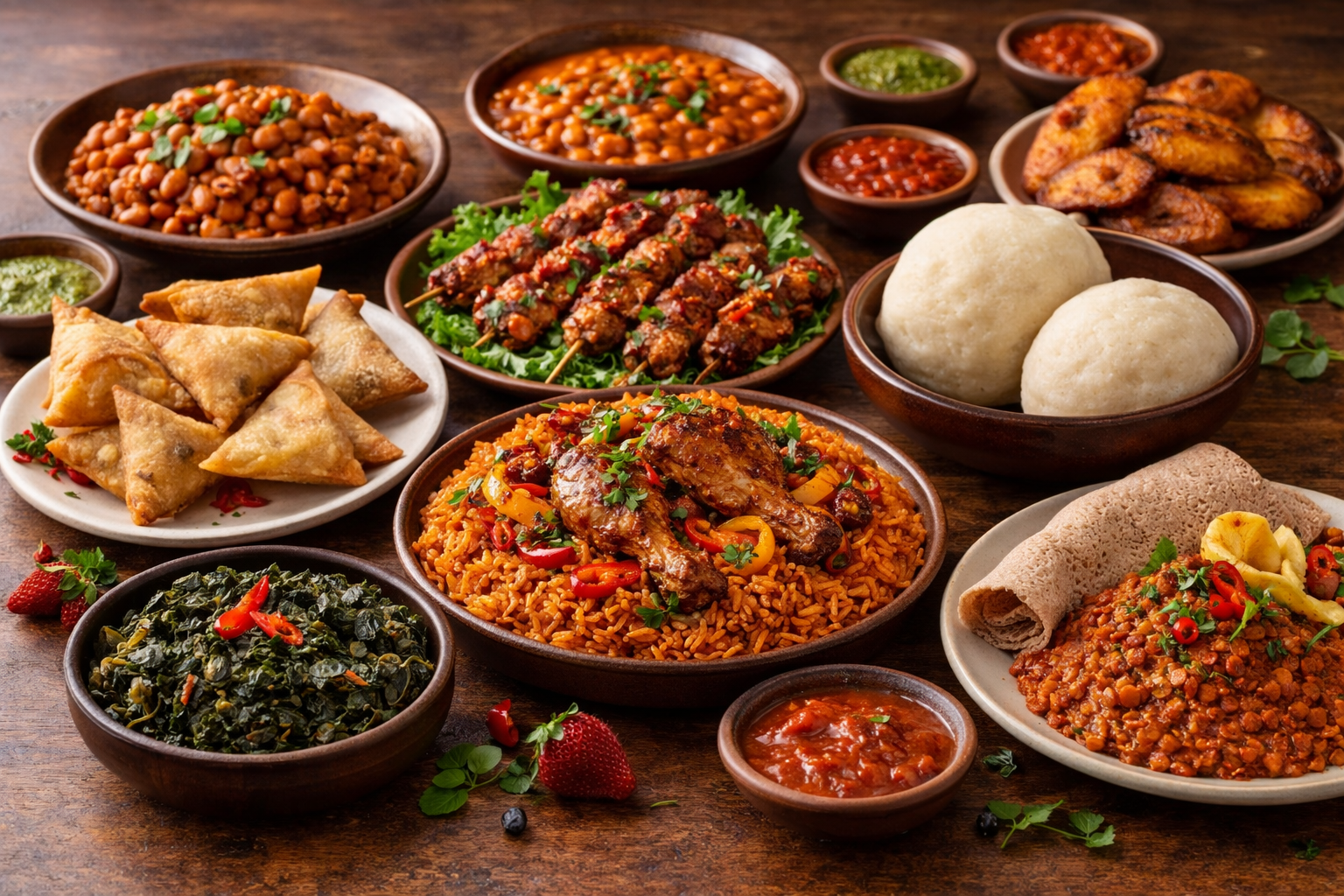Menu Planning: The Definitive Guide
Menu planning is a strategic tool that influences profits, customer satisfaction, and operational efficiency.
By crafting a thoughtful menu, restaurants and food suppliers can stay ahead of trends, innovate based on customer demands, and optimize their offerings.
In this guide, we explain what menu planning the benefits it offers, and how to develop an effective menu.
What is Menu Planning?
Menu planning is a process that involves selecting, organizing, and pricing the food items a restaurant offers. It goes beyond listing dishes; it reflects the restaurant’s concept, customer base, and operational capabilities.
According to a report by the National Restaurant Association, 70% of restaurant owners believe that a well-planned menu directly impacts profitability.
The food cost percentage is calculated by dividing total food costs by total food sales. A typical target for restaurants is between 28% and 35% of revenue.
Successful menu planning takes into account seasonal ingredients, food costs, kitchen capabilities, and the restaurant’s brand identity.
Planning a menu requires balancing customer desires with operational constraints.
For example, restaurants aiming for menu innovation may focus on seasonal produce or trending ingredients, while others may stick to tried-and-true favorites.
Regardless of the approach, a good menu is one that aligns with the restaurant’s brand while catering to its customer base.
Impact of Menu Planning on Costs and Revenue
Menu planning has a direct impact on a food business’s costs and revenue:
Ingredient Costs
The choice of ingredients directly affects the cost per menu item. For instance, a dish with high-quality ingredients will have a higher cost, which should be reflected in its menu price to maintain profitability.
Labor Costs
Menu items that require more preparation time or specialized skills will increase labor costs. Thus, it’s essential to balance complex dishes with simpler ones to optimize labor efficiency.
Overhead Costs
These include rent, utilities, and other operational expenses. Menu pricing should account for these costs to ensure profitability.
Menu Engineering: A Data-Driven Approach to Menu Planning
Menu engineering is a data-driven methodology that helps restaurants analyze and optimize their menus for profitability.
The process involves categorizing menu items based on popularity and profitability, and then strategically placing them on the menu to encourage higher sales. Some key elements of menu engineering include:
Blended Pricing
This strategy involves balancing high-cost and low-cost items on the menu to achieve an overall target food cost percentage.
By analyzing item popularity and profitability, restaurants can optimize their menus for better financial performance.
Menu Psychology
Understanding consumer behavior can help in pricing strategies. Items that are priced attractively can lead to increased sales volumes, even if their profit margins are lower.
Calculating Ideal Food Cost Percentage
To determine an ideal food cost percentage tailored to specific business needs:
- Calculate projected sales.
- Subtract labor costs, overhead, and desired profit from sales to find available food costs.
- Divide this figure by projected sales to get the ideal food cost percentage.
Effective menu planning is vital for managing costs in foodservice operations. By understanding and applying principles like food cost percentages, labor considerations, and menu engineering strategies, foodservice managers can significantly influence their bottom line while meeting customer expectations.
Dine-in, delivery, or digital-first—foodservice is evolving fast. See what’s next in consumer demand, menu innovation, and how to win on and off-premise.
Who Benefits From Menu Planning?
Menu planning benefits several stakeholders in the food and beverage industry:
| Persona | Benefits |
| Restaurant owners: | A well-thought-out menu optimizes costs, enhances profitability, and ensures consistent quality. |
| Chefs | Planning ahead helps chefs innovate while ensuring they have the tools and ingredients needed for smooth kitchen operations. |
| Customers: | A carefully designed menu provides variety and options that cater to different dietary needs and preferences. |
| Staff | Efficient planning aids staff training and ensures smooth service by clearly defining dishes, their ingredients, and preparation times. |
| Suppliers | Consistent planning allows for better relationships with suppliers, ensuring that high-quality, fresh ingredients are always available. |
The 7 Basic Steps of Menu Planning in the Food Industry
Planning an efficient menu can be broken down into seven essential steps:
Understand your customer base
Knowing who your customers are is critical. Are they health-conscious, seeking indulgence, or looking for global flavors? Use consumer data platforms like Tastewise to stay informed on menu trends.
Research food trends
Keeping up with current menu trends helps you stay competitive. Health-focused items like plant-based dishes and sustainability-oriented options are key trends today.
Analyze competitors
Understand what your competitors are offering. Is there a dish they are making that could be adapted with your twist for menu ideation?
Calculate food costs
Balancing creativity with profitability is essential. For example, higher-end ingredients require higher menu prices to maintain a favorable food cost percentage. Aim for a 28-35% food cost ratio.
Design the menu layout
Present your menu in a visually appealing way that guides customers to order what you want to sell most. Menu psychology plays a role here by placing high-margin items where the eye naturally falls.
Incorporate seasonal ingredients
Using seasonal produce not only keeps dishes fresh but also lowers ingredient costs. Seasonal changes also allow for menu innovation, ensuring that the menu stays dynamic.
Test the menu
Before launching, test your new dishes. Staff feedback and customer trials ensure that the final menu resonates with your audience.
Menu Planning Ideas
Restaurants can embrace a variety of menu ideation strategies to keep their offerings fresh and exciting, such as incorporating wine marketing to highlight pairings or promote regional wines.
- Global fusion: Mixing international cuisines is a big hit. Restaurants can combine flavors from different regions to create unique dishes that stand out.
- Sustainability: Offering eco-friendly choices, such as dishes made from sustainably sourced ingredients or plant-based options, is increasingly appealing to today’s consumers.
- Customizable dishes: Allowing customers to customize their meals to suit dietary restrictions or preferences, such as gluten-free or low-carb options, enhances customer satisfaction.
By utilizing tools like Tastewise, restaurants can access real-time consumer data, helping them rapidly pivot to meet new trends and tastes.
The Challenges
While menu ideation and planning are crucial for success, they come with their own set of challenges:
Balancing innovation with consistency
For restaurants, finding the right balance between innovation and consistency is crucial.
While introducing new dishes can keep the menu exciting and attract new customers, maintaining the beloved classics is equally important to avoid alienating loyal patrons.
Too much change can lead to confusion or dissatisfaction, while too little can make the menu feel stagnant and outdated.
Striking this balance requires careful planning and regular feedback from customers.
Ingredient availability
The use of unique or seasonal ingredients can elevate a menu and create memorable dining experiences.
However, relying too heavily on these ingredients can create supply chain challenges, especially if they are difficult to source or prone to seasonal variability.
This can result in inconsistent quality or even menu items being unavailable, frustrating customers and disrupting operations.
Restaurants need to plan ahead and establish reliable suppliers to mitigate these risks.
Cost management
While premium ingredients and elaborate recipes can impress diners, they often come with higher costs, which can eat into profit margins.
Restaurants must carefully balance affordability with innovation, ensuring that menu prices remain accessible while still offering high-quality, exciting dishes.
This may involve finding creative ways to incorporate cost-effective ingredients or scaling back on overly complex preparations without compromising on flavor.
Kitchen capabilities
The introduction of new, complex dishes can present challenges in the kitchen.
Dishes that require special equipment, lengthy preparation times, or advanced techniques can slow down service, leading to longer wait times for customers and added pressure on kitchen staff.
Restaurants must consider their team’s skills, available equipment, and overall workflow when designing new menu items to ensure smooth operations and a positive dining experience.
Adapting to dietary trends
With dietary preferences and restrictions becoming increasingly prevalent, restaurants must adapt quickly to meet changing demands.
The rise of gluten-free, dairy-free, and plant-based diets has created a need for flexible menus that cater to a diverse audience.
Adding or modifying dishes to accommodate these trends requires creativity and a deep understanding of alternative ingredients.
By staying on top of these trends, restaurants can attract a broader customer base and show their commitment to inclusivity.
FAQs
Staying ahead of food trends is crucial in a competitive market, and that’s where Tastewise can help.
Using Tastewise’s AI-powered platform, you can instantly access real-time data on trending ingredients, dishes, and flavors from millions of sources.
This enables you to incorporate the latest menu trends and menu innovation into your offerings, helping you attract customers who are always on the lookout for something new and exciting.
Tastewise streamlines menu ideation by analyzing vast consumer data to identify popular flavor combinations, dietary preferences, and emerging trends.
This allows you to craft recipes that cater to your target audience while offering something fresh and unique.
Whether you’re developing a seasonal dish or introducing a new cuisine, Tastewise’s insights ensure your recipes are aligned with current consumer demand.




